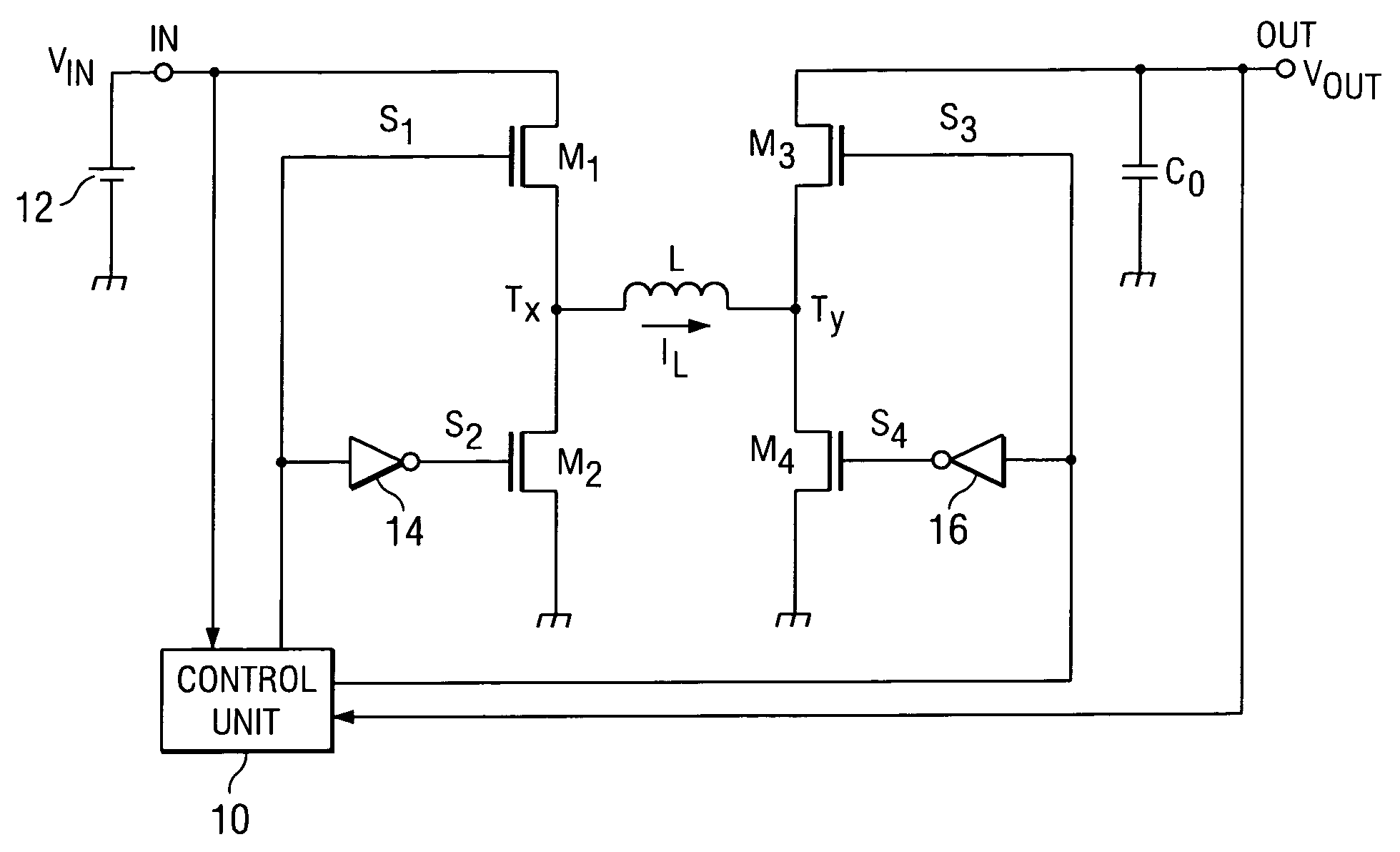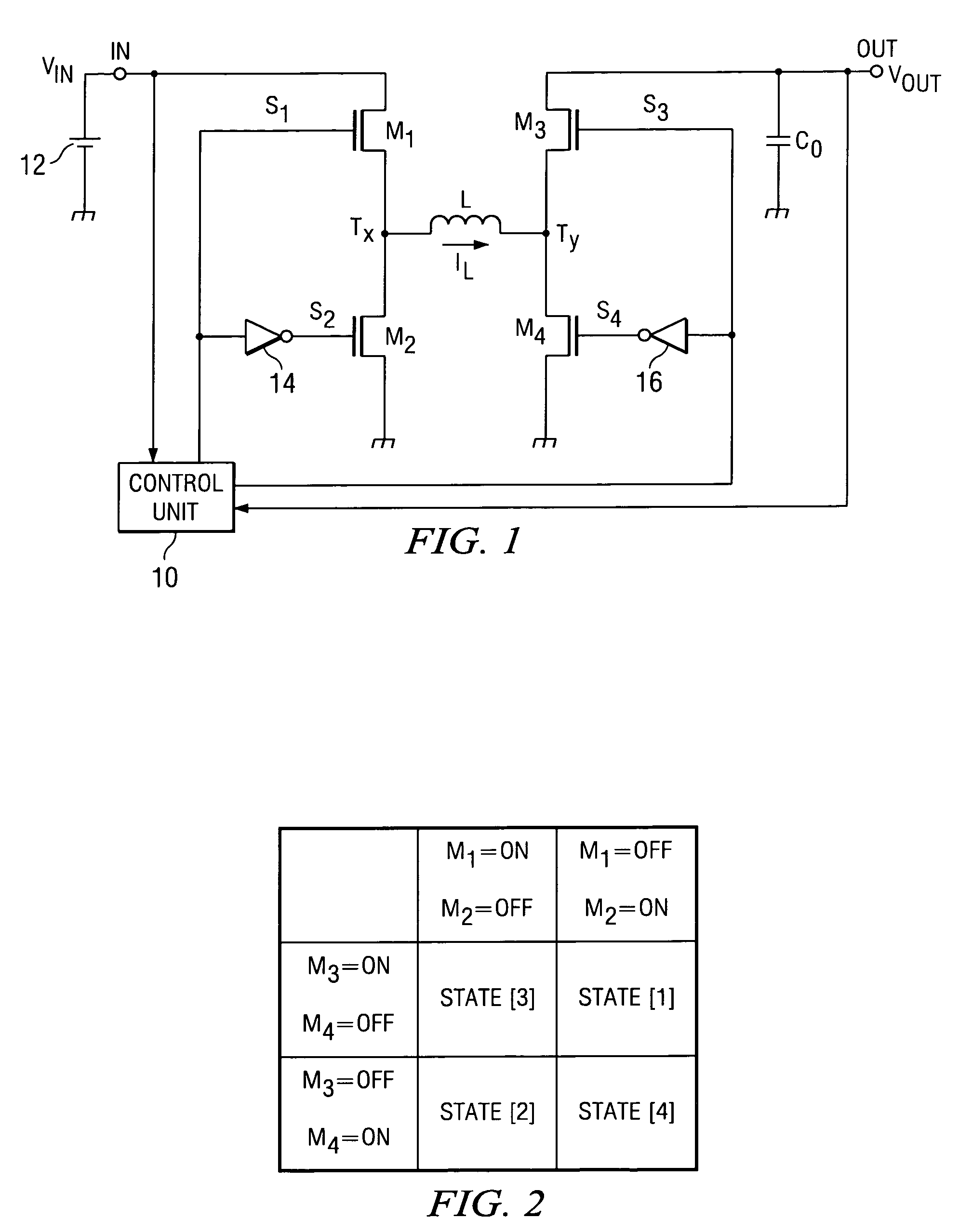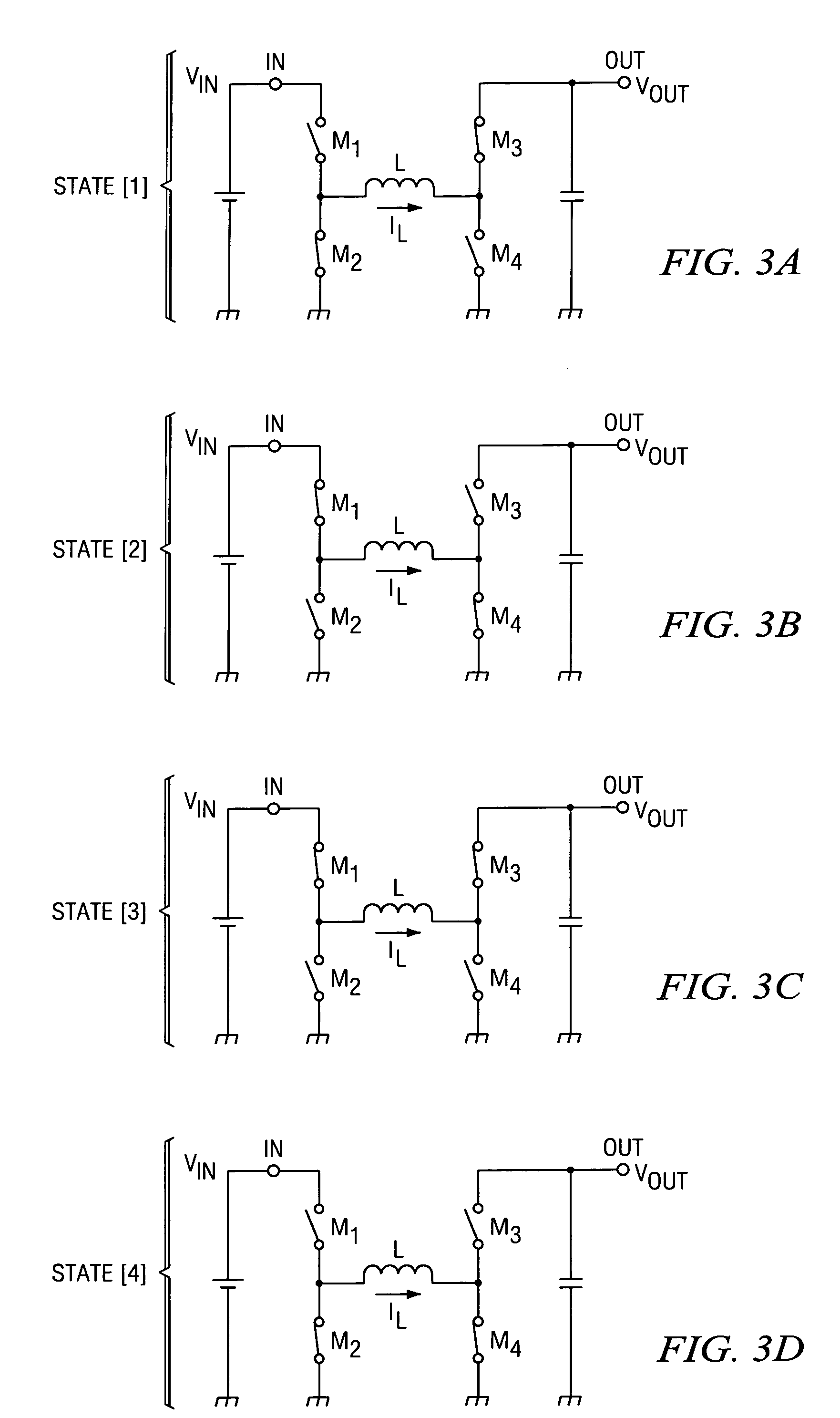DC-DC converter
a converter and dc technology, applied in the field of dc converters, can solve problems such as increasing switching losses
- Summary
- Abstract
- Description
- Claims
- Application Information
AI Technical Summary
Benefits of technology
Problems solved by technology
Method used
Image
Examples
embodiment 1
[0047]FIG. 6 shows the circuit configuration of the step-up / step-down DC—DC converter disclosed in the first embodiment.
[0048]In this DC—DC converter, control unit 10 has feed forward control circuit 18 on the side of switching elements M1, M2 and feedback control circuit 20 on the side of switching elements M3, M4.
[0049]Feed forward control circuit 18 has input voltage monitoring circuit 30, PWM (pulse width modulation) comparator 32, and triangular signal generating circuit 34. In this case, input voltage monitoring circuit 30 has voltage-dividing resistor circuit 22, operational amplifier 24, feedback resistor 26, and reference voltage generating circuit 28. In input voltage monitoring circuit 30, coefficient Ka determined by the voltage-dividing ratio of the voltage-dividing resistor circuit 22 and the resistance of feedback resistor 26 is multiplied with the input voltage Vin, and this multiplication result is added to constant D corresponding to the reference voltage Vref gene...
embodiment 2
[0066]FIG. 11 shows the circuit configuration of the step-up / step-down type DC—DC converter disclosed in the second embodiment. In the second embodiment, in the aforementioned DC—DC converter (FIG. 6) described in the first embodiment, inverted triangular signal generating circuit 48 is omitted, and the same triangular signal Wa as that applied to PWM comparator 32 on the side of feedforward control circuit 18 is applied to PWM comparator 46 on the side of feedback control circuit 20. However, triangular signal Wa is input to input terminal (+) of PWM comparator 46, while the feedback error signal Vb from error signal detecting circuit 44 is input to the other input terminal (−). Consequently, comparator 46 compares the voltage level of feedback error signal Vb with the voltage level of triangular signal Wa. If Vb>Wb, an output voltage, that is, control signal S3 with level L is output. If Vb3 with level H is output. The rest of the configuration is exactly the same as that describe...
PUM
 Login to View More
Login to View More Abstract
Description
Claims
Application Information
 Login to View More
Login to View More - R&D
- Intellectual Property
- Life Sciences
- Materials
- Tech Scout
- Unparalleled Data Quality
- Higher Quality Content
- 60% Fewer Hallucinations
Browse by: Latest US Patents, China's latest patents, Technical Efficacy Thesaurus, Application Domain, Technology Topic, Popular Technical Reports.
© 2025 PatSnap. All rights reserved.Legal|Privacy policy|Modern Slavery Act Transparency Statement|Sitemap|About US| Contact US: help@patsnap.com



